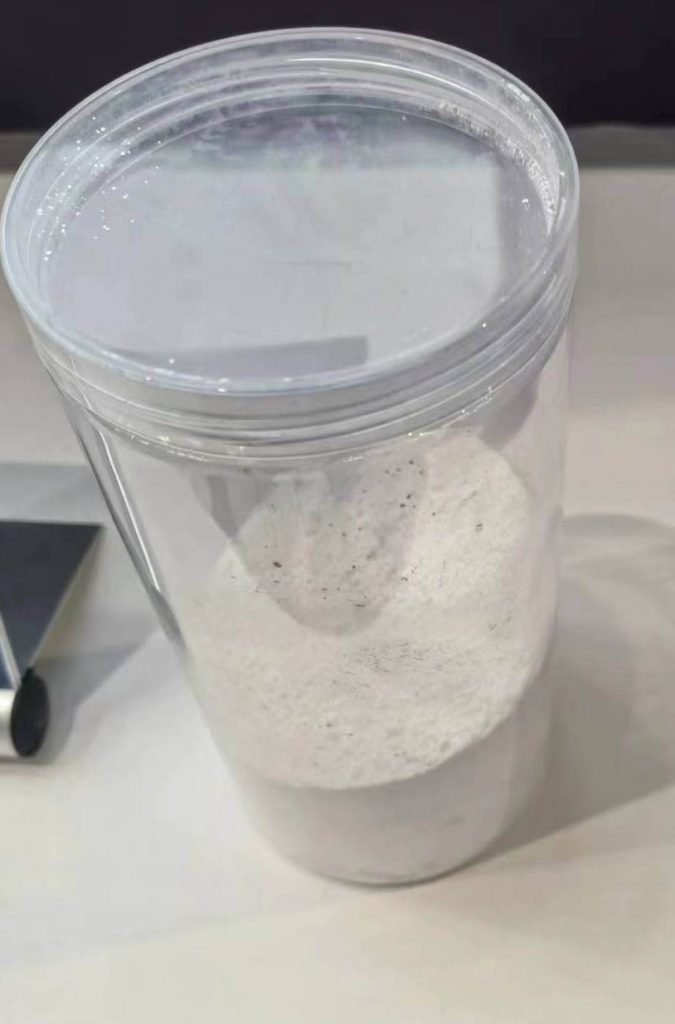Bubble Glass
What are Glass Bubbles?
These glass bubbles are light but strong because they have a high strength-to-weight ratio. This can handle being processed without breaking. They’re made from a type of glass that doesn’t react with chemicals and doesn’t get damaged by water. The glass bubbles have a smooth, non-porous surface, and their round shape gives them several advantages over additives or fillers that have irregular shapes.
Characteristics of Glass Bubbles Microsphere
Glass bubbles microspheres possess a range of distinct characteristics that contribute to their unique properties and versatile applications.
Lightweight
Glass bubbles microspheres are known for their characteristic of being lightweight. This characteristic allows them to add minimal mass to materials while still providing strength and functionality. The lightweight nature of these microspheres is particularly advantageous in industries seeking to reduce the overall weight of their products for improved efficiency and performance.
Strong
Despite their lightweight nature, glass bubbles microspheres exhibit impressive strength. Their structure is engineered to have a high strength-to-density ratio, enabling them to withstand various processing techniques and integration into different materials without compromising their integrity. This strength ensures that the microspheres retain their properties even under challenging conditions.
Stable
Glass bubbles microspheres are chemically stable due to their composition of soda-lime-borosilicate glass. This stability makes them resistant to chemical reactions, corrosion, and degradation over time. As a result, they maintain their properties and performance in a wide range of environments, enhancing the durability and reliability of products incorporating these microspheres.
Spherical
The spherical shape of glass bubbles microspheres is a defining feature that brings several benefits. This shape allows for uniform dispersion within materials, enhancing the consistency of properties such as thermal conductivity and mechanical strength. Their smooth, rounded surface reduces friction, enabling smoother flow and mixing during processing.
Hollow Bubble Glass
The hollow structure of glass bubbles microspheres contributes to their lightweight nature and unique characteristics. This hollowness reduces the density of the microspheres, making them buoyant and efficient insulators. It also adds to their strength-to-weight ratio, enabling them to be integrated into materials without compromising their overall structural integrity.
Bubble Glass
Application of Glass Bubbles Microsphere
Because of its characteristics, glass bubbles microspheres are applied in different industries:
Use of Hollow Glass Microsphere in Coating
Glass bubbles microspheres are widely used in the coatings industry to enhance the properties of paints and coatings. When added to coatings, these microspheres contribute to improved durability, reduced weight, and enhanced thermal insulation. They also offer better resistance to cracking and chipping, resulting in longer lasting and more resilient coatings. The lightweight nature of the microspheres allows for the creation of thicker coatings without adding excessive weight, which can be beneficial in achieving desired coverage and performance.
Use of Glass Microspheres in Construction Materials
Glass bubbles microspheres are utilized in a variety of construction materials, including concrete and cementitious products. By incorporating these microspheres into concrete mixes, construction materials become lighter, which simplifies handling and transportation. Additionally, the microspheres contribute to improved insulation properties and reduced thermal conductivity. In concrete applications, they also aid in reducing the overall density while maintaining structural integrity.
Use of Hollow Glass Spheres Drilling Fluids | Bubble Glass
One of the primary purposes of incorporating hollow glass spheres into drilling fluids is to precisely control the fluid’s density. Density control is a critical parameter in drilling operations, as it affects the balance between the pressure exerted by the drilling fluid and the pressure from the formation being drilled. By adjusting the concentration of glass microspheres within the drilling fluid, drilling engineers can finely tune and optimize the fluid’s density.
Beyond density control, the incorporation of hollow glass spheres can also enhance the rheological properties of drilling fluids. These microspheres contribute to the overall flow characteristics of the fluid, leading to improved circulation and transport of cuttings and debris to the surface. This helps maintain a clear borehole, reducing the risk of equipment blockages and improving overall drilling efficiency.
Use of Hollow Glass Microsphere in Rubber & Plastic Industry
In the rubber and plastic industry, glass bubbles microspheres are utilized as lightweight fillers and reinforcing agents. When added to rubber or plastic formulations, they help reduce the overall weight of the final product while maintaining or even enhancing mechanical properties. This is particularly valuable in applications where weight reduction is desired, such as automotive parts or consumer goods. The microspheres also contribute to dimensional stability and can assist in achieving consistent product quality.
Use of Hollow Glass Beads for Traffic Paint and Road Paint | Bubble Glass
Hollow glass beads have reflective properties that make them highly effective in increasing the visibility of road markings, especially during nighttime and low-light conditions. When vehicle headlights or other light sources hit these beads, they reflect the light back toward its source, making road markings more visible to drivers. This reflective quality significantly improves road safety by providing clear guidance to.
When hollow glass beads become embedded within the paint, it creates a protective layer that helps prevent premature wear and fading. As vehicles pass over the markings, the glass beads act as a shield, maintaining the paint’s integrity and extending its lifespan. This durability is particularly important for maintaining effective road signage and markings under various weather conditions.
Use of Micro Bubbles in Resin Formulations
When integrated micro bubbles in resin formulations, they add minimal weight while significantly increasing the volume of the mixture. This lightweight attribute is particularly advantageous in sectors where weight reduction is essential for efficient transportation. The addition of micro bubbles allows precise control over the density of the resin material. By adjusting the concentration of these bubbles, manufacturers can fine-tune the overall density of the composite.
Bubble Glass
How to Properly Handle and Store Glass Bubbles?
It’s important to take some precautions when handling glass bubbles microspheres. Because these hollow glass microspheres are very lightweight and small, there’s a possibility that they could produce dust when you handle or process them. To reduce the chances of this happening, here are some things to keep in mind when working with them:
Keep Container Closed | Bubble Glass
When dealing with glass bubbles, Bubble Glass is crucial to keep their container closed when you’re not actively using them. This prevents unnecessary exposure to air, moisture, and contaminants that could affect their properties. By maintaining a sealed container, you preserve the integrity of the hollow glass microspheres and prevent any unintended changes in their characteristics.
When you receive packages containing glass bubbles, Bubble Glass is recommended not to open them until you’re fully prepared to start using them. Opening the packages prematurely can lead to the release of microspheres into the environment, increasing the risk of dusting and potential contamination. Wait until you’re ready to incorporate the glass microballoons bubbles into your process to minimize the chances of particles becoming airborne.
Use Air Siphon when Opening Packages | Bubble Glass
When you’re ready to open packages containing glass microballoons, Bubble Glass is recommended to have an air siphon tool nearby. An air siphon is a device that helps to direct air currents away from the opened package. By positioning the air siphon strategically, you can create an airflow that pulls any particles that might become airborne away from the immediate working area. This helps to minimize the dispersion of particles and reduces the potential for dusting.
Depending on the regulations set forth by the Occupational Safety and Health Administration, it might be necessary to implement a dust collection system. A dust collection system is designed to capture and contain particles that are generated during handling and processing. This system helps to maintain a cleaner and safer working environment by preventing the release of particles into the air.
Use Suction Wand When Transporting |
When you need to move glass bubbles from one location to another, Bubble Glass is recommended to use a tool called a suction wand. A suction wand is a device that uses a controlled airflow to draw the microspheres into a contained space. To ensure effective and controlled transfer, use a suction wand with a slight positive pressure aeration. This helps prevent the microspheres from scattering and becoming airborne.
After using the suction wand, transfer the glass bubbles to a closed mixing tank. A closed mixing tank is an enclosed container that prevents the escape of microspheres into the surrounding environment. This containment ensures that the glass bubbles remain confined, reducing the risk of dusting and contamination.
If a closed mixing tank is not available, Bubble Glass is important to take additional precautions. Utilize dust collection equipment, which captures airborne particles, keeping the working area clean and safe. Consider using pneumatic conveyor systems. These systems use controlled airflows to transport glass microballoons without creating dust. Many companies have found success using pneumatic conveyors to move the microspheres effectively.
Use Static Eliminators | Bubble Glass
Static electricity can accumulate when working with materials like glass bubbles, which could lead to unwanted effects such as sparks or particle attraction. To prevent this buildup of static electricity, Bubble Glass is crucial to use devices known as static eliminators. These are specialized tools that help neutralize or remove static charges from surfaces and materials.
By employing static eliminators, you ensure that any potential static charges are safely dissipated. This reduces the risk of sparks that could cause fires or damage to sensitive equipment. Neutralizing static charges helps prevent the particles from clinging together, which can lead to issues such as clumping or uneven dispersion.Bubble Glass,we looking for forward to receiving your reply. Thanks.

